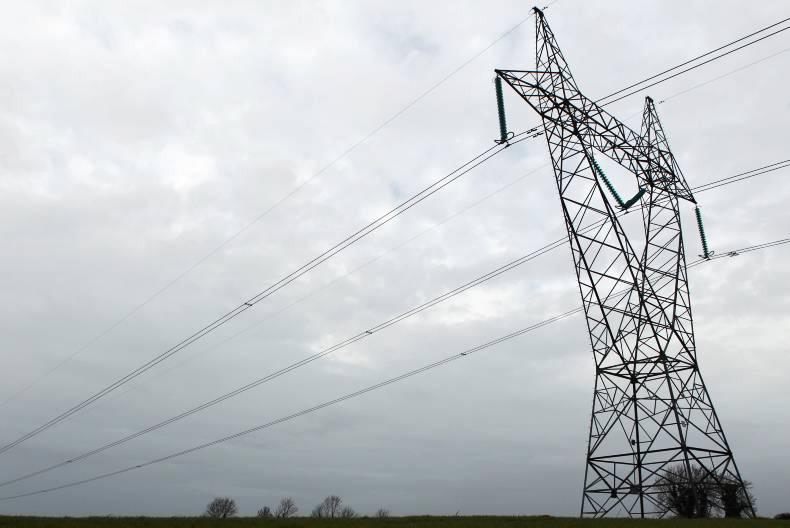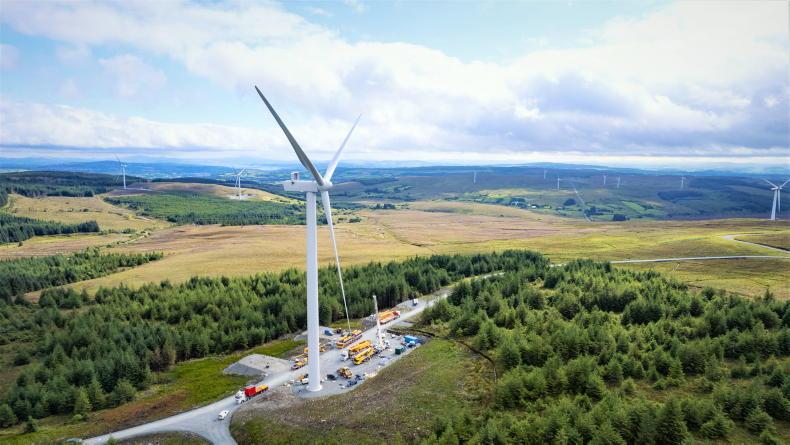Information released exclusively to the Irish Farmers Journal under a Freedom of Information request reveals that €33.6m of electricity bill payers' money has been spent on the southern element of the North-South interconnector to date.
EirGrid, the State body in charge of managing, developing and operating the national grid, has spent this money over an 11-year period, between April 2005 and July 2016.
An Bord Pleanála is due to make a decision on whether to grant planning permission for the proposed 400kV overhead line sometime in September 2016, meaning the money has so far been spent on a range of non-building activities, including initial feasibility studies back in 2005, public consultations from the launch of the project in 2007 to 2016, the publication of numerous studies, route selection and detailed line design, landowner liaison, legal proceedings, the preparation of two environmental impact studies and planning applications.
The development is funded by a component of all customer electricity bills in the Republic.
EirGrid has also estimated that, granted planning permission is given by An Bord Pleanála this month, the cost of developing the southern element of the North-South Interconnector will be approximately €215m.
Interconnector
The North-South interconnector project proposes the addition of a new 400kV overhead line to our grid, connecting the electricity grids of Ireland and Northern Ireland. This proposed line would run through counties Monaghan, Cavan and Meath in the Republic, and Armagh and Tyrone in Northern Ireland.
There is an issue of safety, and from a health perspective, it’s well documented that proximity of pylons to people’s residence increases the risk of some very dangerous diseases
EirGrid estimates that the interconnector when it is in service will save electricity customers on the island of Ireland €20m per year in 2020, rising, over the following decade, to between €40m and €60m per annum by 2030.
Objections
However, the plans have been met with huge opposition and have been delayed for some time, with local people setting up the group North East Pylon Pressure.
Speaking on RTÉ Radio One’s Morning Ireland programme in March this year, following the start of an oral hearing into the project, Padraig O’Reilly of North East Pylon Pressure said current proposals are “not actually necessary, because new technology has advanced and there is the alternative of using underground lines along public roads”.
O’Reilly raised the concerns of land owners and farmers who would be working closely with the pylons on a daily basis: “There is an issue of safety, and from a health perspective, it’s well documented that proximity of pylons to people’s residence increases the risk of some very dangerous diseases.”
In the region of 1,500 objections were made to the planning body in this period
Moreover, between 16 June and 24 August 2015, a 10-week period of statutory public consultation took place in respect of the planning application for the North-South Interconnector and, according to An Bord Pleanála, in the region of 1,500 objections were made to the planning body in this period.
The objections cover a wide range of issues including the impact of the pylons on human health, heritage assets, the value of land and agriculture. In terms of agriculture, members of the public have objected to the erection of high-voltage lines and pylons on farms in the five counties and said the pylons could destroy hedgerows, forestry and valuable topsoil.
Unlike EirGrid's other electricity power projects, GridLink and GridWest, where adding more power to existing lines or undergrounding are cited as options, the installation of controversial overhead lines is believed to be the only feasible option for the North-South interconnector.
Read more
Full coverage: EirGrid
Information released exclusively to the Irish Farmers Journal under a Freedom of Information request reveals that €33.6m of electricity bill payers' money has been spent on the southern element of the North-South interconnector to date.
EirGrid, the State body in charge of managing, developing and operating the national grid, has spent this money over an 11-year period, between April 2005 and July 2016.
An Bord Pleanála is due to make a decision on whether to grant planning permission for the proposed 400kV overhead line sometime in September 2016, meaning the money has so far been spent on a range of non-building activities, including initial feasibility studies back in 2005, public consultations from the launch of the project in 2007 to 2016, the publication of numerous studies, route selection and detailed line design, landowner liaison, legal proceedings, the preparation of two environmental impact studies and planning applications.
The development is funded by a component of all customer electricity bills in the Republic.
EirGrid has also estimated that, granted planning permission is given by An Bord Pleanála this month, the cost of developing the southern element of the North-South Interconnector will be approximately €215m.
Interconnector
The North-South interconnector project proposes the addition of a new 400kV overhead line to our grid, connecting the electricity grids of Ireland and Northern Ireland. This proposed line would run through counties Monaghan, Cavan and Meath in the Republic, and Armagh and Tyrone in Northern Ireland.
There is an issue of safety, and from a health perspective, it’s well documented that proximity of pylons to people’s residence increases the risk of some very dangerous diseases
EirGrid estimates that the interconnector when it is in service will save electricity customers on the island of Ireland €20m per year in 2020, rising, over the following decade, to between €40m and €60m per annum by 2030.
Objections
However, the plans have been met with huge opposition and have been delayed for some time, with local people setting up the group North East Pylon Pressure.
Speaking on RTÉ Radio One’s Morning Ireland programme in March this year, following the start of an oral hearing into the project, Padraig O’Reilly of North East Pylon Pressure said current proposals are “not actually necessary, because new technology has advanced and there is the alternative of using underground lines along public roads”.
O’Reilly raised the concerns of land owners and farmers who would be working closely with the pylons on a daily basis: “There is an issue of safety, and from a health perspective, it’s well documented that proximity of pylons to people’s residence increases the risk of some very dangerous diseases.”
In the region of 1,500 objections were made to the planning body in this period
Moreover, between 16 June and 24 August 2015, a 10-week period of statutory public consultation took place in respect of the planning application for the North-South Interconnector and, according to An Bord Pleanála, in the region of 1,500 objections were made to the planning body in this period.
The objections cover a wide range of issues including the impact of the pylons on human health, heritage assets, the value of land and agriculture. In terms of agriculture, members of the public have objected to the erection of high-voltage lines and pylons on farms in the five counties and said the pylons could destroy hedgerows, forestry and valuable topsoil.
Unlike EirGrid's other electricity power projects, GridLink and GridWest, where adding more power to existing lines or undergrounding are cited as options, the installation of controversial overhead lines is believed to be the only feasible option for the North-South interconnector.
Read more
Full coverage: EirGrid










SHARING OPTIONS